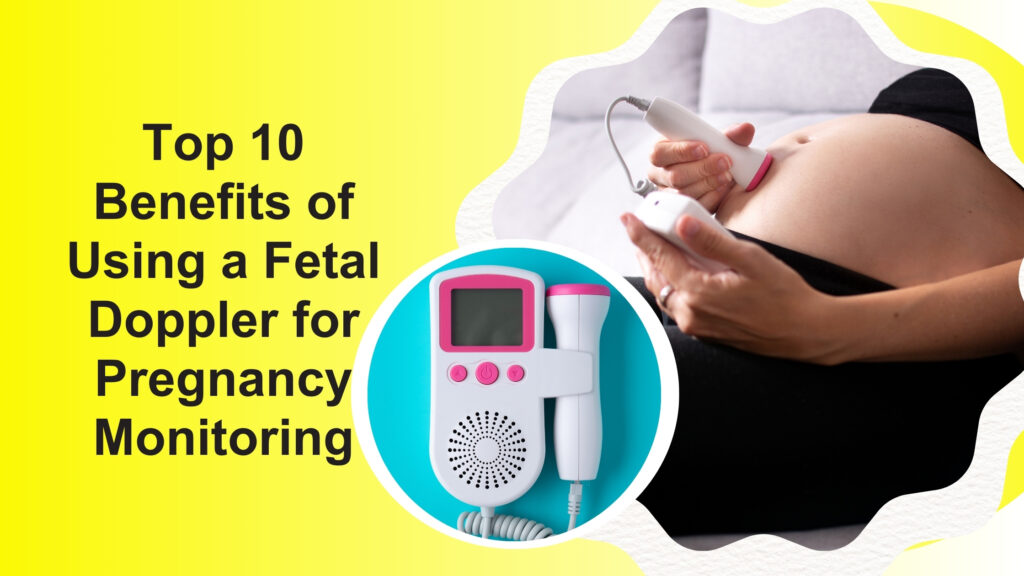Currently Empty: $0.00
What is Preterm Labor : Causes, Symptoms & Prevention
Pregnancy is a remarkable journey filled with anticipation, dreams, and hope. The ultimate goal for every expectant parent is a healthy, full-term birth. However, sometimes the unexpected happens, and preterm labor or premature birth become a reality. In this article, we will explore what preterm labor or premature birth are, their main causes, signs to watch out for, and most importantly, how you can reduce your risk for these challenging situations.
Contents
What is Preterm (Premature) Labor?
Preterm labor, also known as premature labor, refers to the onset of regular uterine contractions and cervical changes that occur before the 37th week of pregnancy. In a typical full-term pregnancy, which lasts around 39 to 40 weeks, the baby has sufficient time to develop and mature within the womb. However, when labor begins prematurely, there is an increased risk of the baby being born before reaching full-term gestation.
Premature labor is a significant concern because babies born prematurely may face health challenges due to incomplete development of their organs and systems. These challenges can range from respiratory issues and feeding difficulties to long-term developmental delays. Therefore, identifying and managing premature labor is a critical aspect of prenatal care to optimize outcomes for both the mother and the baby.
What Are the Main Causes of Premature Birth?
Premature birth, which occurs when a baby is born before completing the full 39 to 40 weeks of gestation, can have various causes. Understanding these causes is essential for both expectant parents and healthcare providers to identify and address risk factors. Here are the main causes of premature birth explained in detail:
Infections:
Infections during pregnancy can increase the risk of premature birth. Infections in the genital or urinary tract can lead to inflammation and uterine contractions, potentially triggering preterm labor. These infections might include urinary tract infections (UTIs), bacterial vaginosis, sexually transmitted infections (STIs) like chlamydia and gonorrhea, and intrauterine infections. Early detection and prompt treatment of infections are crucial to reduce this risk.
Multiple Pregnancies:
Carrying more than one baby, such as twins, triplets, or higher-order multiples, can increase the risk of premature birth. The uterus may struggle to sustain multiple pregnancies to full term, leading to preterm labor. Proper prenatal care, including close monitoring of both the mother and babies, is essential for managing this risk. Fetal monitoring is important during pregnancy for several crucial reasons:
Assessment of Fetal Well-Being:
Fetal monitoring allows healthcare providers to assess the baby’s health and well-being by tracking vital signs such as the fetal heart rate. This helps ensure that the baby is growing properly and receiving adequate oxygen and nutrients from the mother.
- Early Detection of Issues: Monitoring helps detect potential problems early in pregnancy, such as fetal distress or growth restrictions. Identifying these issues promptly enables healthcare providers to take preventive measures and reduce the risk of complications.
- Monitoring High-Risk Pregnancies: In pregnancies with preexisting medical conditions or complications, continuous fetal monitoring is essential. It helps healthcare providers closely monitor the baby’s condition and make informed decisions about the pregnancy and delivery plan.
- Detection of Preterm Labor: Fetal monitoring can identify signs of preterm labor, such as regular contractions or cervical changes. Early detection allows for interventions to delay or prevent premature birth, improving the baby’s chances of a healthier start in life.
Guidance for Medical Interventions:
During labor, fetal monitoring is crucial to assess the baby’s response to contractions. If signs of distress are detected, healthcare providers can make informed decisions about interventions, such as cesarean sections or assisted deliveries, to ensure the baby’s safety during birth.
Chronic Health Conditions:
Chronic medical conditions in the mother can contribute to premature birth if not adequately managed during pregnancy. Some of these conditions include:
- Diabetes: Poorly controlled diabetes, both type 1 and type 2, can lead to preterm birth. High blood sugar levels can affect the developing fetus and increase the risk of preterm labor.
- Hypertension (High Blood Pressure): Chronic hypertension or preeclampsia (a pregnancy-specific form of high blood pressure) can lead to complications that necessitate preterm delivery to protect the mother’s and baby’s health.
- Autoimmune Disorders: Conditions like lupus and antiphospholipid syndrome can increase the risk of complications during pregnancy, potentially leading to preterm birth if not managed appropriately.
Cervical Issues:
Problems with the cervix can contribute to premature birth. One common issue is a short cervix or cervical incompetence, where the cervix begins to open or efface too early in the pregnancy. This can be identified through regular cervical length measurements with ultrasound. If detected, medical interventions such as cervical cerclage (suturing the cervix closed) may be recommended to reduce the risk.
Lifestyle Factors:
Unhealthy lifestyle choices during pregnancy can increase the risk of premature birth. These factors include:
1. Smoking: Smoking during pregnancy is a significant risk factor for premature birth. It can restrict fetal growth and development and lead to complications that necessitate early delivery.
2. Drug Use: Illicit drug use, including recreational drugs and some prescription medications, can increase the risk of preterm birth due to their impact on the developing fetus.
3. Poor Nutrition: A diet lacking essential nutrients can contribute to preterm birth. Adequate nutrition, including folic acid and iron intake, is crucial for fetal development.
High levels of stress and certain psychosocial factors can increase the risk of premature birth. Chronic stress, depression, anxiety, and domestic violence can lead to hormonal changes that may trigger preterm labor. Emotional support, counseling, and stress-reduction techniques are essential for expectant mothers facing these challenges.
Uterine and Placental Conditions:
Certain uterine and placental conditions can increase the risk of preterm birth:
1. Uterine Fibroids: Large uterine fibroids or fibroids that block the cervix can lead to preterm labor. Monitoring and managing fibroids during pregnancy is crucial.
2. Placental Abruption: This occurs when the placenta separates from the uterine wall prematurely, potentially triggering preterm labor due to reduced blood flow to the baby.
Previous Preterm Birth:
A history of a previous preterm birth is a significant risk factor for subsequent preterm births. Women who have experienced preterm labor or birth in the past may receive extra monitoring and interventions in subsequent pregnancies to reduce the risk.
Short Interpregnancy Interval:
Getting pregnant again shortly after a previous birth can increase the risk of preterm birth. It’s generally recommended to wait at least 18 to 24 months between pregnancies to allow the body to recover fully.
Unknown Causes:
In many cases, the exact cause of premature birth remains unknown. Research continues to uncover more about the complex factors that contribute to preterm labor and birth.
Understanding these causes is crucial for expectant parents and healthcare providers to identify and address potential risk factors. Early and regular prenatal care, a healthy lifestyle, and close monitoring by healthcare professionals can help reduce the risk of premature birth and improve the chances of a full-term, healthy pregnancy.
What Are The Signs of Preterm Labor?
Recognizing the signs of preterm labor is vital for early intervention. Some common signs include:
Regular Contractions:
One of the primary signs of preterm labor is the onset of regular, rhythmic contractions. These contractions differ from the typical, irregular Braxton Hicks contractions that many pregnant individuals experience. Preterm contractions occur at regular intervals and may become increasingly frequent and painful over time. They can be mistaken for gas or indigestion but typically do not subside with changes in activity or position.
Lower Abdominal Pressure:
Some women describe feeling intense pressure in the lower abdominal area when experiencing preterm labor. It can feel like the baby is pushing downward more forcefully than usual. This pressure can be continuous or come and go with contractions.
Backache:
Persistent back pain, especially in the lower back, can be a sign of preterm labor. This backache is different from the occasional back discomfort that often accompanies pregnancy. It may be consistent or worsen with contractions.
Vaginal Bleeding:
Any vaginal bleeding during pregnancy should be promptly reported to a healthcare provider. While light spotting can have various causes and may not necessarily indicate preterm labor, heavier bleeding, or bleeding accompanied by other signs, such as contractions or abdominal pain, should be taken seriously.
Watery Discharge:
An increase in vaginal discharge, particularly if it becomes watery, can be a sign of preterm labor. This discharge may be clear or tinged with blood. If you experience a sudden gush of fluid from the vagina, it could indicate your water breaking, which is a significant sign of preterm labor and requires immediate medical attention.
Change in Vaginal Discharge:
Pay attention to any changes in your vaginal discharge. If it becomes noticeably different in color, consistency, or odor, it’s essential to consult your healthcare provider.
How Can You Reduce Your Risk For Premature Labor?
Expectant mothers often wonder how they can reduce their risk for preterm labor and premature birth. Here are some practical steps you can take:
Regular Prenatal Care:
Attending all your prenatal check-ups is vital. Your healthcare provider will monitor your pregnancy, check for any signs of preterm labor, and provide guidance on managing your specific situation. Prenatal care is an important cornerstone of a healthy pregnancy, offering expectant mothers essential medical guidance, support, and monitoring to ensure the well-being of both mother and baby.
Maintain a Healthy Lifestyle:
Eating a balanced diet, staying well-hydrated, and getting adequate rest are essential for a healthy pregnancy. Avoid smoking, drug use, and excessive alcohol consumption.
Manage Chronic Conditions:
Managing chronic conditions during pregnancy is a critical component of ensuring the well-being of both the expectant mother and her baby. Conditions like diabetes, high blood pressure, and autoimmune disorders require careful attention and monitoring to minimize potential complications. By effectively managing chronic conditions, expectant mothers can significantly improve their chances of a healthy, full-term pregnancy and delivery.
Stay Hydrated and Rest:
Maintaining proper hydration and ensuring you get adequate rest during pregnancy are fundamental aspects of nurturing a healthy pregnancy. Hydration is essential because your body’s increased blood volume supports both you and your growing baby, and staying well-hydrated aids in transporting vital nutrients and oxygen to your baby.
It also helps prevent uterine contractions, which, if left unchecked, can trigger preterm labor. Additionally, proper hydration reduces the risk of swelling, urinary tract infections, and digestive discomforts common during pregnancy.
Conclusion
In conclusion, while pregnancy is a remarkable journey filled with anticipation, it’s important to be aware of the risks of preterm labor and premature birth. Understanding their causes, recognizing the signs, and taking proactive steps can significantly reduce these risks. Regular prenatal care, a healthy lifestyle, and digital tools can empower expectant mothers to navigate their pregnancy journey with confidence. By prioritizing these measures, we can work towards the goal of a healthy, full-term birth and a brighter future for both mother and baby.















